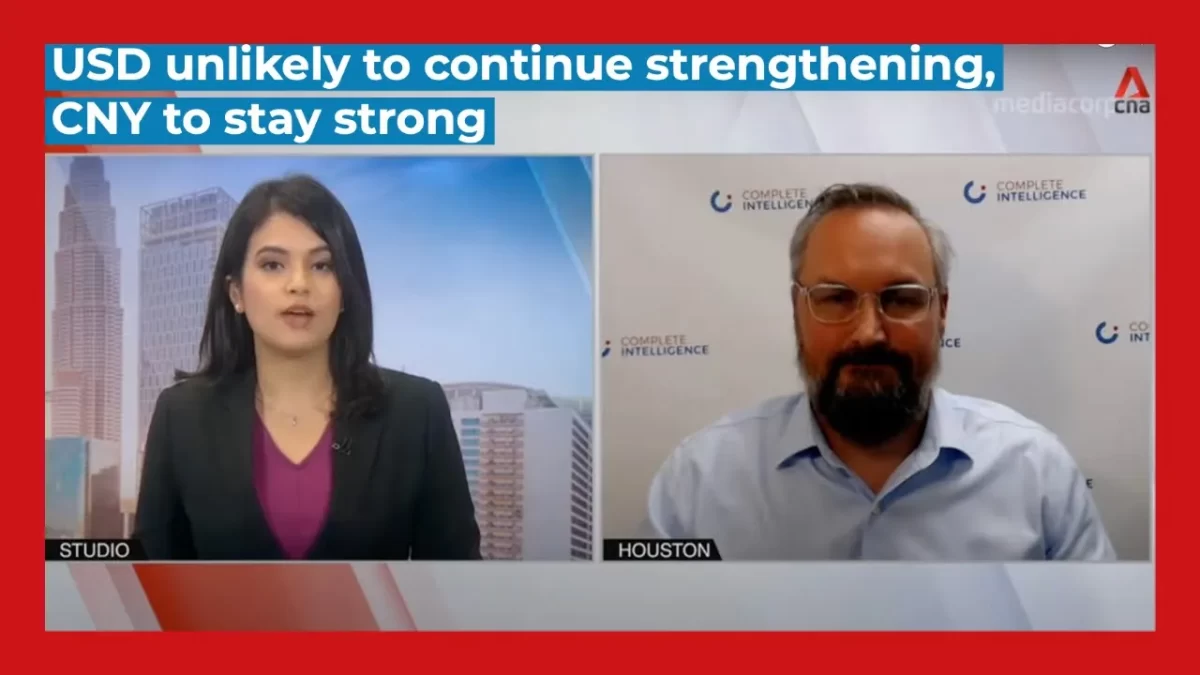The full episode was posted at https://www.channelnewsasia.com. It may be removed after a few weeks. This video segment is owned by CNA.
Show Notes
CNA: Welcome back to Asia First. Wall Street took a hit overnight amid concerns that a rise in Omicron cases would stall growth and add to inflationary pressures. Experts say supply chains and corporate profits could be dealt another blow as the possibility of increased restrictions is back on the table.
The Dow and the Nasdaq tumbled 1.2 percent. The S&P 500 closed 1.1 lower, with financials and materials among the biggest decliners. Also weighing on sentiment, Goldman Sachs has lowered its US growth forecast for next year. This after Senator Joe Manchin said over the weekend he would oppose President Biden’s 1.75 trillion dollar spending bill.
Let’s bring in Tony Nash. Now, he’s founder and CEO of Complete Intelligence, joining us from Houston, Texas. Lots to talk about today, Tony. So let’s start with Omicron. How much do you think potential measures are going to dent economic growth given the spread of the highly transmissible variant coinciding with the end of the era of cheap money?
TN: Yeah, it’s a good question. I think it really depends on where in the US you are. I’m in Texas and in in certain parts of the country you could barely tell that there’s a pandemic. There aren’t restrictions at all here, in Florida and other places. And also, we had our surge a couple months ago. So we’re on the downside of that surge now.
In the north, where you have kind of seasonal viruses, they’re on the up upward motion of the surge and so there’s a lot of sensitivity in northern states like New York, Boston, or Massachusetts, Washington DC, Michigan those sorts of places. So I think what you’re seeing is a kind of seasonal sensitivity because of Omicron and people getting nervous and so you know, again it really all depends where you are in the US.
For the upcoming Christmas break, flights are packed. Americans are traveling again. These sorts of things are happening. So, of course, there’s always a risk that people will do a hard lockdown like DC has put in some new measures today. But other places are seeing the virus as endemic and just kind of trying to move on with it. So, I think it could go either way but I don’t necessarily think we’ll have sustained negative impact. We could have short-term negative impact.
CNA: What about the risk from Fed moves and do you think the projected three rate hikes next year are going to be enough to contain inflation given the potential for Omicron to cause these price pressures to spike?
TN: Sure. You know, I do think that the Fed will pursue the tightening, meaning of its balance sheet pretty quickly. I think the rate hikes they’ll probably do one and wait and see and then they’ll proceed with the others later.
I think we can’t forget that 2022 is a midterm election year in the US and the Fed, you know, they they try to stay nonpartisan sometimes. But you know, there’s going to be a lot of pressure for them to make sure that the economy continues growing at an acceptable pace and kind of pushes down against inflation, So they’re in a tricky spot so they can’t just go out of the gate with three rises. They have to take one. See how the market digests it. Continue to build up expectations for the later rate rises then proceed based on how the expectations are set in.
CNA: What would that mean for the flows into markets given how Biden administrations Build Back Better Plan is also facing a setback? We could see a narrower bill than the 1.75 trillion on the social and climate front. What then do you think the market drivers are going to be if both the central bank and the government are curtailing that stimulus?
TN: Right. You know it is possible. Like I said earlier, kind of travel those sorts of things are coming back. I think Americans are just dying to get back to something that’s a little more regular, a little less constricted.
You know we do see things like food, entertainment, travel these sorts of things moving. Temporarily, we do see things like technology dialing back. But you know as we get into Q1 or Q2, we think that stuff will come back and be interesting again. So. But not necessarily as much of the work from home activities. People here are gradually getting back into the office.
So you know what we will see say for US equity markets is because tapering and interest rates we will likely see a stronger Dollar and that stronger Dollar will attract more money from the rest of the world as well. So both domestic growth, although it’ll be a bit tepid in ’22 will help to continue to push markets marginally.
We’re not going to see massive growth like we saw in ’21. But the the strengthening US dollar will draw up liquidity from other parts of the world, too.
CNA: Just very quickly if you can, Tony. What do you think the outlook for energy demand and oil prices is going to be like given how some countries are already reverting back to containment measures?
TN: Yeah. Oil is tricky. In the near term, I think oil is a little bit tricky for the next few months. I think the outlook is better as we get say to the end of Q1 and into Q2. But for now, we’re not expecting a dramatic upturn in crude prices like we’ve seen in gas prices in Europe and other places.
CNA: Okay, we’ll leave it there for today and keep an eye on those commodities. Thanks very much for sharing your insights with us. Tony Nash of Complete Intelligence.


